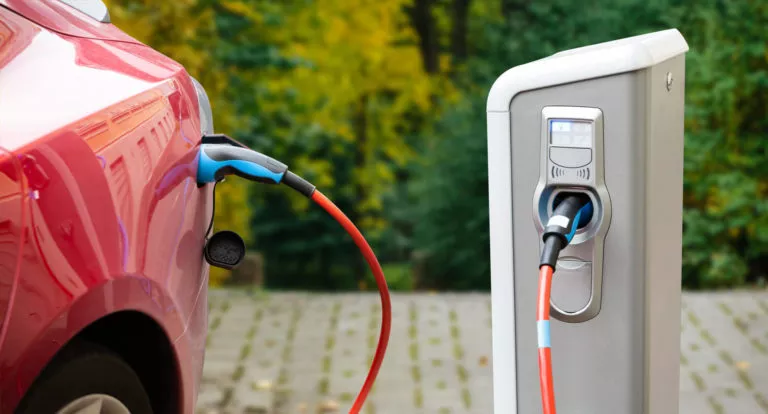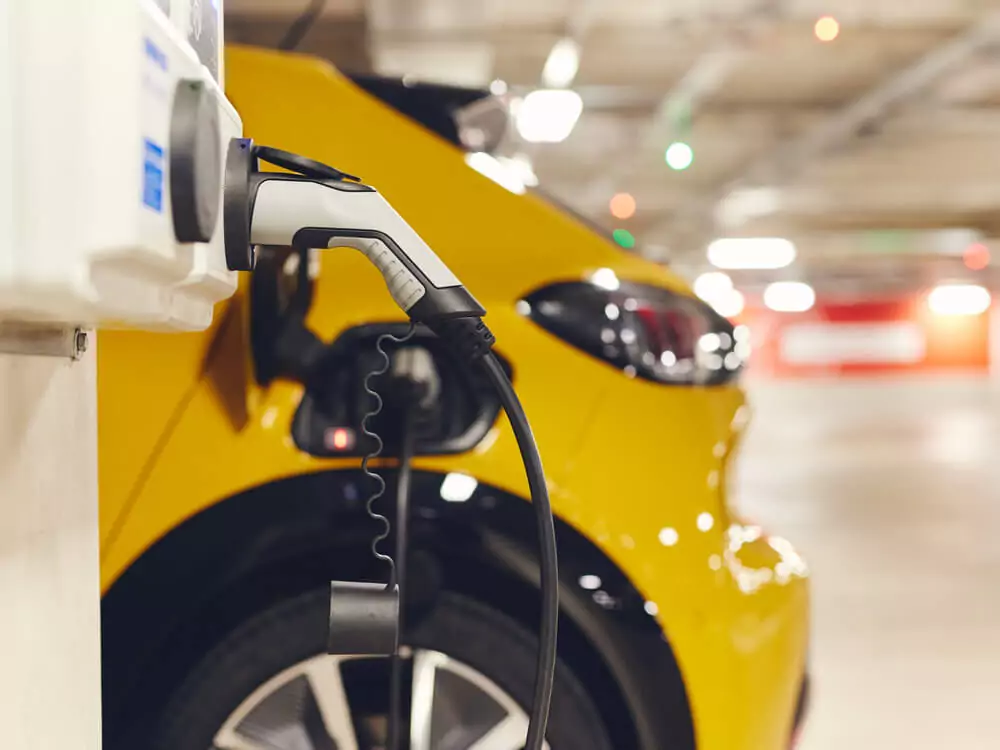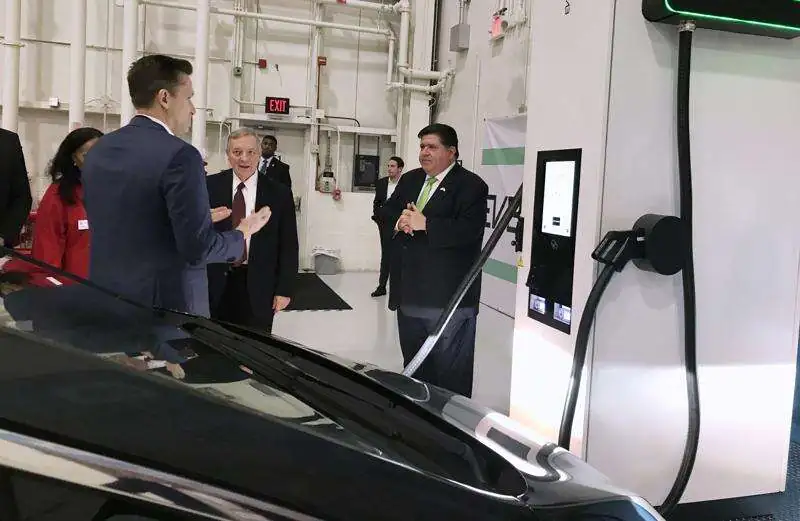The Potential of Passive Income from EV Car Charging Stations

Nov 06 2023
A Comprehensive Analysis for Illinois Businesses and Public Buildings
The transition to electric vehicles (EVs) is rapidly gaining momentum, driven by environmental concerns, technological advancements, and government incentives. As EV adoption continues to rise, so does the demand for accessible charging infrastructure. This presents a significant opportunity for businesses to generate passive income by installing EV charging stations at their locations.
The Allure of Passive Income from EV Car Chargers: Freedom or Fantasy?
The idea of earning money while you sleep, travel the world, or pursue your passions is undeniably attractive. That’s the promise of passive income: a steady stream of cash flow generated with minimal ongoing effort. But before you dive headfirst into the latest “get rich quick” scheme, let’s peel back the layers and understand what passive income truly entails.
At its core, passive income comes from assets or systems that work for you, not the other way around. Rental properties, dividend-paying stocks, and established online businesses are classic examples. While upfront effort and investment are often required, the ongoing maintenance should be minimal. Imagine a rental property with a reliable tenant, or a blog that generates ad revenue even while you’re on vacation.
Remember, the key word here is “passive,” not “effortless.” Building any sustainable income stream takes time, research, and often some initial hard work. There’s no magic formula that guarantees riches without putting in your dues. Be wary of unrealistic claims or get-rich-quick schemes that promise passive income with little to no effort.
So, is passive income a path to financial freedom? It can be, but it’s not a one-size-fits-all solution. Carefully evaluate your skills, resources, and risk tolerance before choosing a path. Remember, there’s no substitute for hard work, smart planning, and a touch of patience. But if you’re willing to invest the time and effort, passive income can be a valuable tool to diversify your income streams and build a more secure financial future.
Passive income for a business, government building or non-profit is just as valuable as for an individual. It helps businesses improve the bottom line. It works as an additional form of income for government buildings, to help offset taxation or provide more services. Or a non-profit can treat passive income like additional donations, or help them achieve greater services to their clients.
EV Charging Stations: A Viable Passive Income Source
EV charging stations offer a compelling opportunity for businesses to generate passive income. Once installed, these stations require minimal ongoing effort to operate and maintain. Businesses can charge a fee for each charging session, creating a steady stream of revenue.
There is typically a cost to install the chargers, and then a cost each time the system is used. But, the amount you charge can be greater than the amount that you pay, generating passive income each time the system is used. As soon as you get past the initial investment of the system, the remainder of the charging income is all passive income, which could last for decades.
A new great input into this system is that in Illinois, utility programs are helping to cover some of the cost to install an EV Car Charger. This can help reduce the time it takes to recoup the investment, or speed up the time that passive income will come to the organization.
Factors Influencing Passive Income Potential
Several factors influence the amount of passive income a business can generate from EV charging stations:
- Location: Installing chargers in high-traffic areas, such as shopping centers, workplaces, or public parking lots, can significantly increase usage and revenue. If there is an existing charger right next to your building, this makes your location less desirable. Unless that charger is always full, then adding one could be a big win.
- Charging Speed: Offering a mix of Level 2 and DC fast chargers can cater to a wider range of EV users and potentially attract more customers.
- Charging Fees: Setting competitive charging fees that align with local market rates and the type of chargers offered is crucial to attract and retain customers.
- Partnerships: Collaborating with local businesses or organizations to promote the use of EV chargers can expand the customer base and boost revenue.
- Maintenance: Regular maintenance of EV chargers ensures their reliability and uptime, minimizing disruptions to customer service and maximizing revenue potential.

Calculating Potential Passive Income
Estimating the potential passive income from EV charging stations requires considering several factors:
- Average Daily Usage: Estimating the number of charging sessions per day based on location, traffic patterns, and charger type. More cars charging means more money.
- Average Charging Fee: Determining the average fee per charging session based on local market rates and charger type. This can be a competitive rate, but more available chargers means you can likely charge less. If you are the only game in town, you can charge whatever you would like.
- Operating Costs: Considering the costs of electricity, maintenance, and any applicable fees or taxes. Maintenance is relatively low on EV car chargers, but you do need to watch what how your energy rate changes and update your pricing accordingly.
By multiplying the average daily usage by the average charging fee and subtracting operating costs, businesses can estimate their potential daily passive income. This can be further extrapolated to project monthly or annual revenue.
There are several factors that impact how much electricty (kWh) flows from your charger into batteries, and how much you charge. Some chargers will use time as a rate, but most use the amount of electricity.
Electricity is based on amperacity, and voltage. Both of those are impacted by your electric panel, and the amount of electricity available in your building and panel. Most commercial building have 240V available, and we typically see at least 50 amps of power available now that most buildings have been doing LED lighting retrofits. So the power (kWh) is available as a formula of ampacity * voltage. The greater either of those inputs is, the greater the flow of energy will be to the cars.
Of course, how often the charger is used also impacts the amount of energy that flows. The longer the charging and more cars charging will lead to more passive income.

Real-World Examples
Numerous businesses have successfully implemented EV charging stations and generated substantial passive income. For instance, a shopping mall in California reported earning over $20,000 per month from its EV charging stations. Similarly, a hotel chain in Texas generated over $10,000 per month from EV chargers installed at its properties.
We have installed EV car chargers for several libraries in Illinois, including Oak Park Library and Vernon Area Libraries. Those libraries do not charge for the users of this service, but they have instead brought another reason for usage of this public space. And for an institution like a library, that can add more value than an additional revenue stream, especially if they aspire to be local thought leaders.
Additional Considerations
Beyond the financial benefits, installing EV charging stations can enhance a business’s reputation for sustainability and innovation. This can attract environmentally conscious customers and strengthen the brand’s image.
How EV Car Charging impacts your image is likely positive in Illinois, but more rural areas can have different brand image impact on your business. So that is something to consider, but it also can bring in new clients that may not otherwise visit your establishment. EV car ownership is growing – so that means more future income and more future passive income.
1. Percentage of all new car sales:
- In 2023, the share of the total US vehicle market captured by EVs was 7.6%, according to estimates from Kelley Blue Book. This is up from 5.9% in 2022.
2. Percentage of new light-duty vehicle sales:
- Including hybrid and plug-in hybrid vehicles alongside battery electric vehicles (BEVs), the combined share of these electrified options reached 17.7% of new light-duty vehicle sales in the third quarter of 2023, according to the Energy Information Administration. This translates to around 15-16% for the whole year considering the increasing EV adoption throughout 2023.
Other Passive Income From Sustainability Projects
Along with generating passive income from EV Car Charging Access, there are several other ways to generate passive income from sustainability projects.
First are fast payback energy efficiency projects. If you have outdating lighting, HVAC, compressed air, or refrigeration – the savings each month can be calculated and compared to the savings to generate a payback on the investment. After the payback is achieved in 6 months to 3 years, the savings each month can be looked at as passive income.
Additionally, the same can be considered for a renewable energy project. After the payback is completed, the energy generated is passive income. I had a client do a renewable solar PV project on their roof simply as a way to deal with inflation in the future. He knew his investment would not need to be repeated, would only get more expensive, and the price of energy would only go up faster than other opportunities.
All three of these passive income opportunities, EV Car Charging, Energy Efficiency, and Solar PV, all have a lower capital investment if rebates and SREC incentives are taken advantage of by the building owner. And tax savings are additional reasons to consider these projects, and all of them have their own benefits via taxation, some that can even be assigned to another entity for non profits and government buildings via the 179D tax strategy.
Consider Goodwill as a Passive Income for Your Business
While income is super nice to add to any business, the fact is you probably make better margins on whatever you sell. You also likely spend some money on advertising to bring customers in the door.
EVs do not actually cost a lot of money to charge in Illinois because our energy rates are pretty low. At an average cost for businesses of $.12 per kWh, you can fill 300 miles on a car for about $10 to $15. And even at very fast speeds of level 2 charging, someone is likely going to put far less energy in their battery.
So if you sell a widget, and you make $10 of profit on each widget – giving away a few dollars of charging for a customer who is likely going to buy your widget is a great opportunity. If you have a high margin business, like a coffee or tea shop, it could be even more valuable. So basically, the more you make on each new customer, the more you can consider EV as a viable way to bring customers in the door by giving away free charging.
Employees love this as well, and depending on how sticky your employees are, you can help retain staff by offering this for them, whether it is paid or not. Do you have an employee of the month program? How about free charging for the winner? There are plenty of ways to use this resource as “goodwill” to drive your business forward, whether you charge or not for the electricity.
Conclusion
EV charging stations offer a promising avenue for businesses to generate passive income while contributing to the transition to a sustainable transportation future. By carefully considering location, charger types, pricing strategies, and partnerships, businesses can maximize their revenue potential from this emerging market. As EV adoption continues to grow, the demand for charging infrastructure will increase, presenting even greater opportunities for businesses to capitalize on this trend.
Featured Posts

Mar 15 2021
Energy Savings Formula
In 2002, I became a firefighter in the north suburbs of Chicago. I was young and idealistic - loving almost every part of the job. However, I had another secret passion - sustainability. In addition…
Continue Reading >

May 02 2019
Verde Energy Efficiency Experts 10 Most Sustainable Companies in Chicago
In our energy efficiency consulting firm, we constantly look for inspiration from local companies that lead and innovate in clean energy and sustainability. Not all companies have billion dollar budgets, but that doesn’t mean that…
Continue Reading >
Related Articles

Apr 17 2024
Public EV Car Charging Technology Advancements
Where Will This Fast Moving Market Move? Electric Vehicles are quickly gaining market share in Illinois and in the United States. In fact, they rose from 5.9% of the market in 2022 to 7.6% in…
Continue Reading >

Nov 22 2023
Does Installing an EV Charger Make Sense for Your Hotel?
Gearing Up for the EV Revolution: A Comprehensive Guide to EV Charging Stations for Illinois Hotels The hospitality industry is constantly evolving, adapting to the ever-changing needs and preferences of its guests. As the world…


